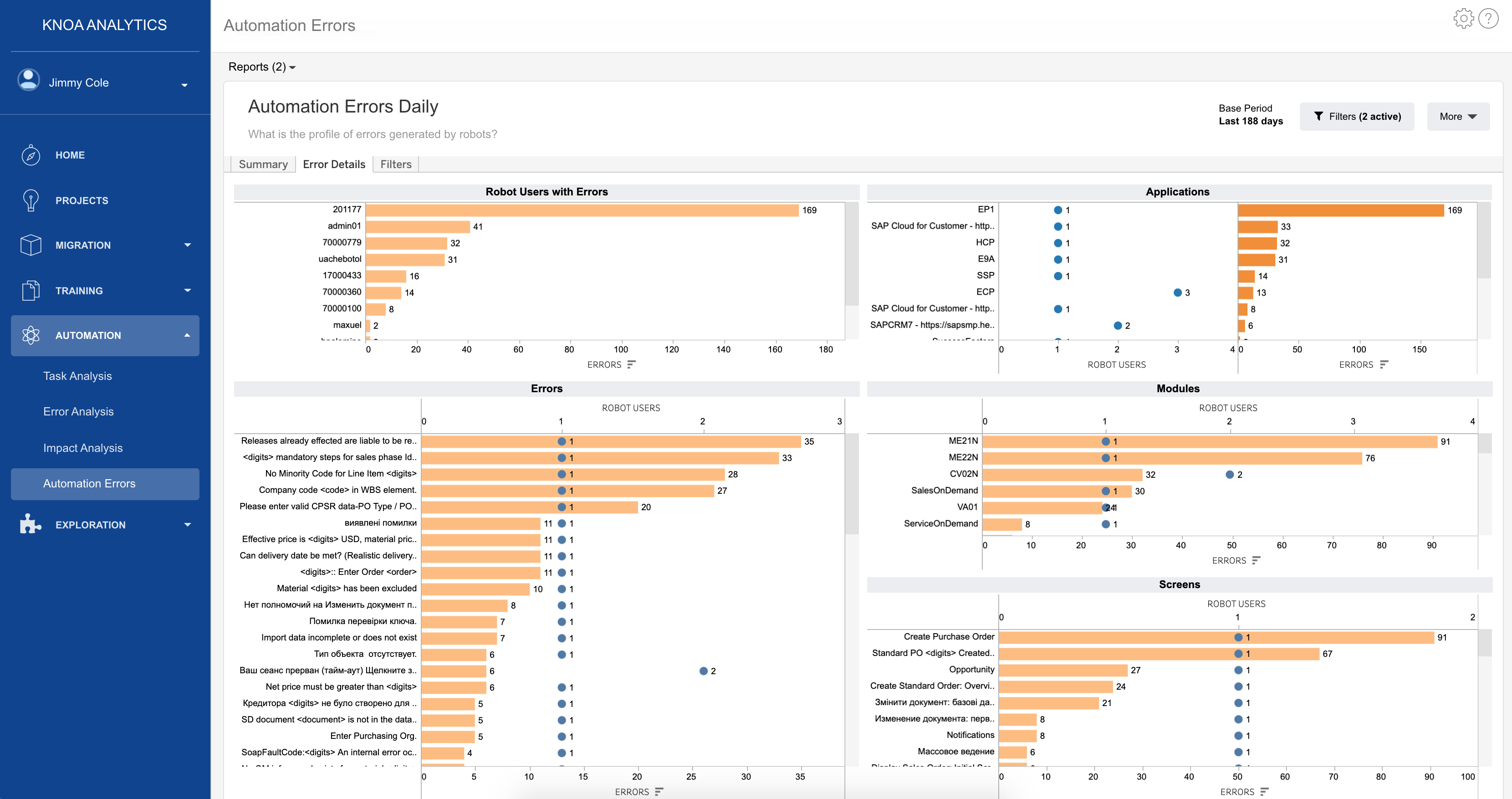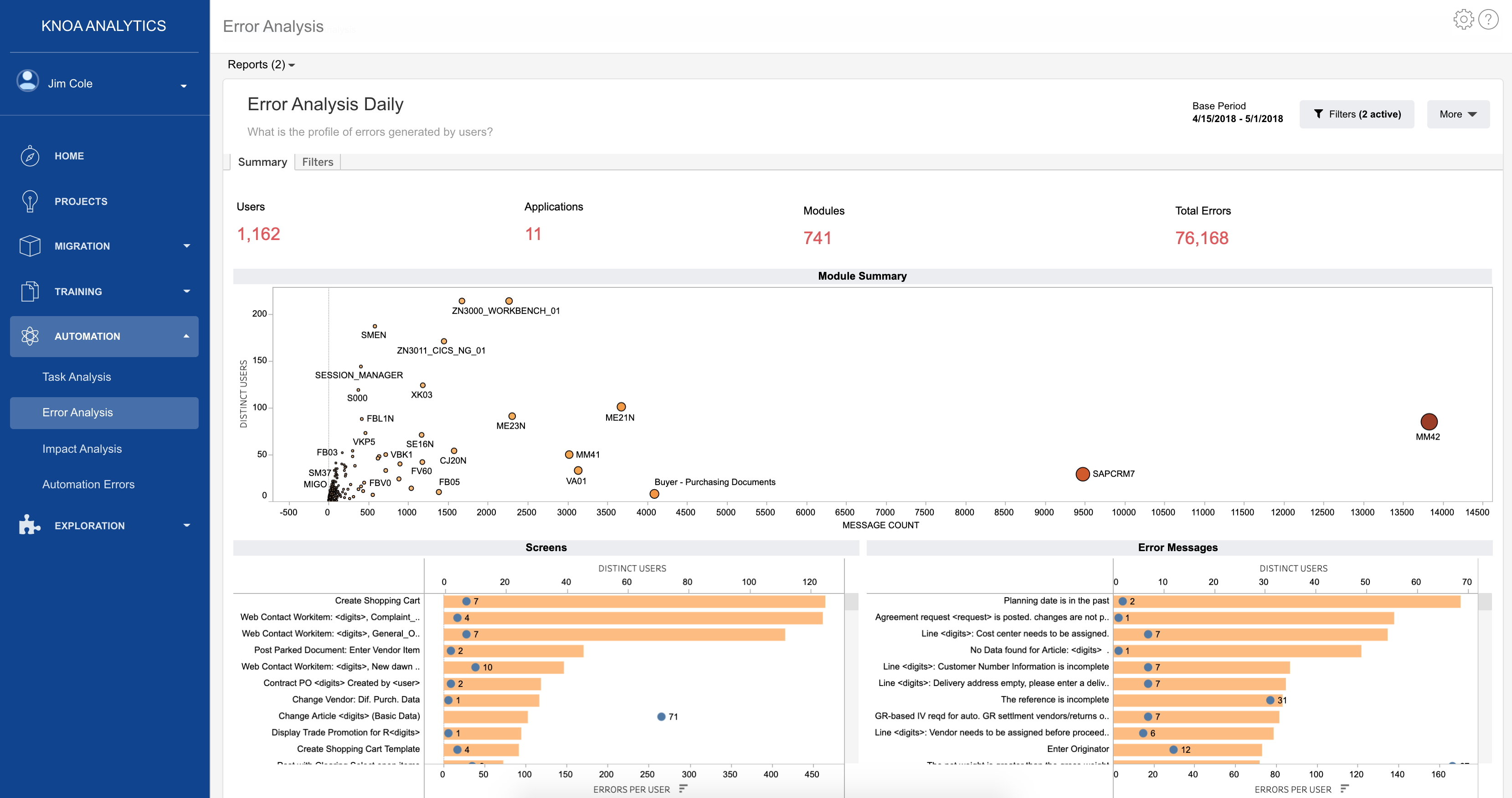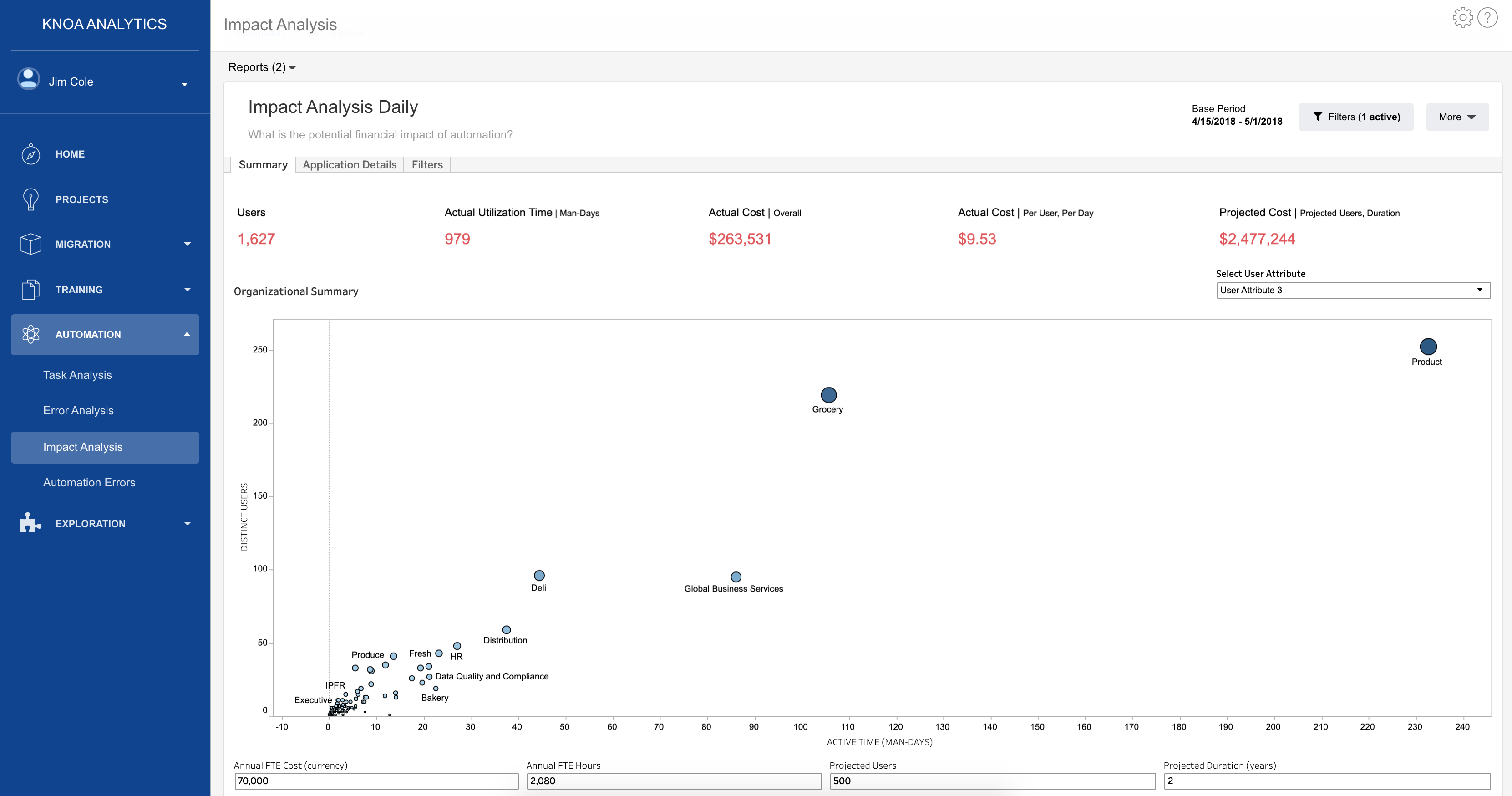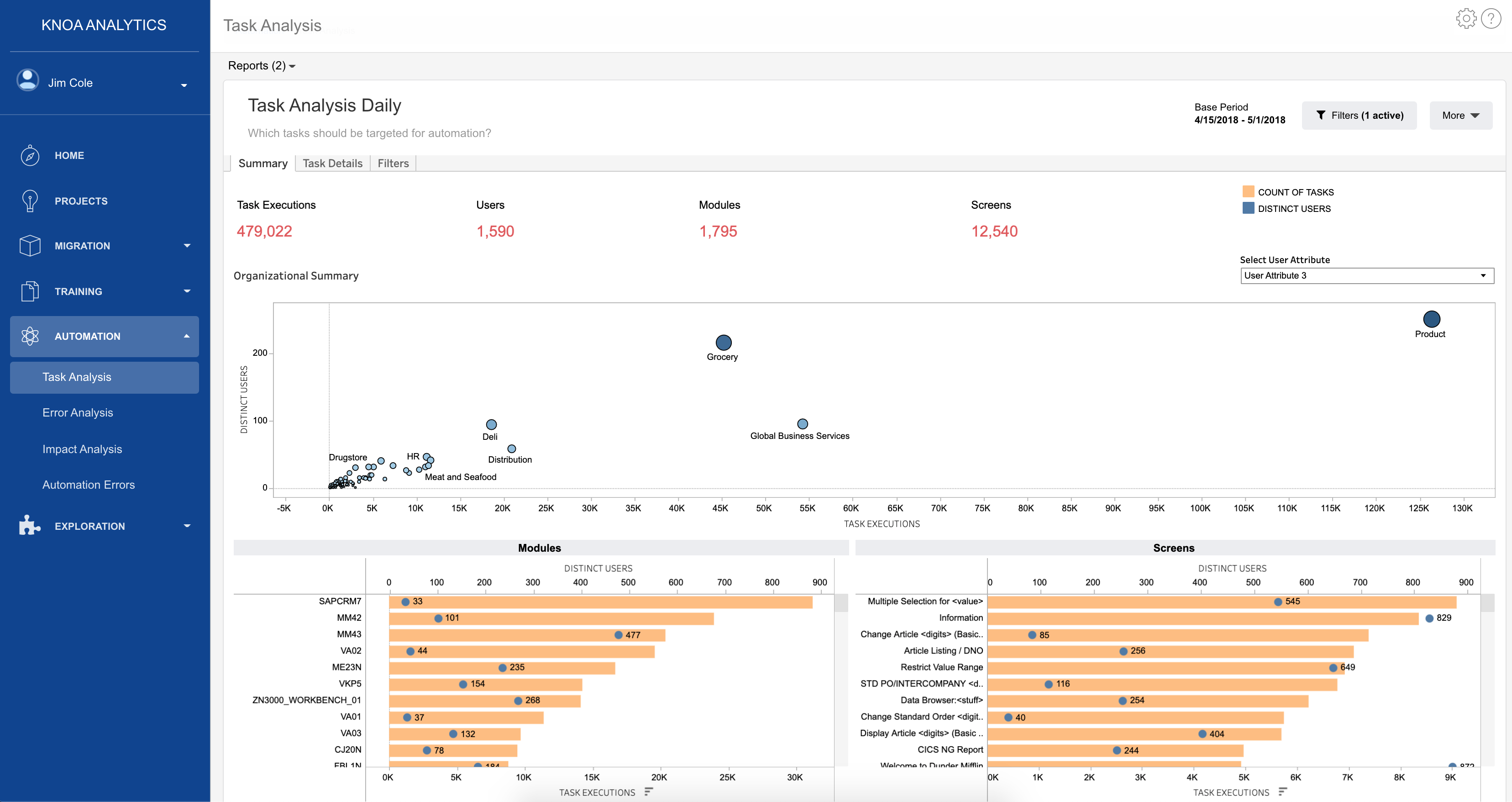Knoa User Experience Management (UEM) in support of Robotic Process Automation (RPA)
Companies are increasingly leveraging robotic process automation (RPA) as part of their core digital transformation strategy, as a way to drive incremental efficiencies within the scope of their existing application environments, such as SAP and Oracle. Furthermore, the RPA projects are predominantly originating with business stakeholders, where the main focus is to augment employees’ capabilities, in order to free them for more value-adding work.
With its focus on analyzing real user behaviors and interactions with production systems, Knoa is in a unique position to provide complete visibility into front-end processes and tasks that lend themselves to automation. Knoa’s task mining data augments standard RPA products, such as SAP iRPA, UiPath, Automation Anywhere, and others.
Unlike other task mining solutions, which offer a partial view of user behaviors, Knoa’s task mining capability provides an accurate and complete view of user interactions with the application front-end, to produce a high fidelity representation of how tasks are actually performed.
Knoa user analytics can be used to identify multiple automation targets:
- Range of applications and transactions used in the execution of most common tasks, which can be linked through automation
- Repetitive, high-volume interactions with the front-end, which can be streamlined or eliminated with UI-driven automation
- Tasks that are prone to human induced errors, which can be reduced or eliminated through automation
- Routine tasks with low degree of variability, where human effort can be entirely offloaded to robots
Optimizing Knoa UEM for your RPA Project
Since Knoa generates its data from interactions with a live application User Interface (UI), it can also be leveraged to monitor the tasks executed by actual robots. Specifically, you can use Knoa to:
- Measure the frequency of robot executed tasks, across all application environments
- Compare the productivity of human-driven transactions vs. their robotic counterparts
- Detect error conditions encountered by robots and collect relevant diagnostics, to help improve their resilience
- Continuously monitor robot-UI interactions, to proactively detect conditions that lead to failure, such as when the application UI changes
Finally, Knoa’s user data is equally relevant for business stakeholders of RPA projects. Since Knoa measures the actual utilization of production system by real employees, it can be used to quantify the potential financial benefit (expressed in terms of productivity gains) for any RPA initiative. This can be used to get management buy-in for initial or future RPA investments.
Contact us to learn more about how you can use Knoa for your next RPA project.
 ANALYST BLOG
ANALYST BLOG
EMA Brief: How Knoa’s User Experience Management can Optimize RPA for Value
Let’s Talk!
Learn how Knoa UEM can help your organization leverage robotic process automation (RPA) as part of your core digital transformation strategy.
"*" indicates required fields




